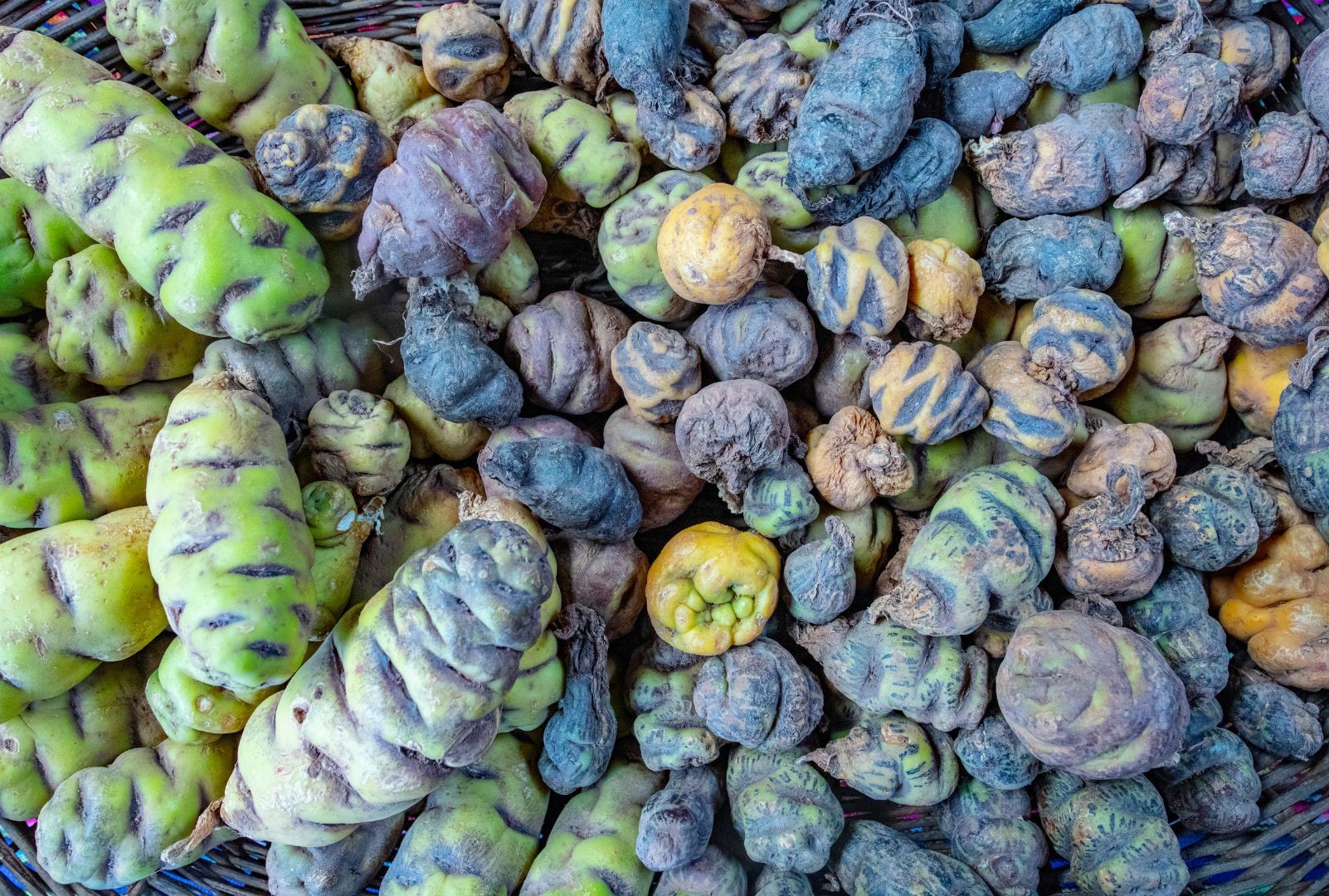The Potato: A Journey through Time, and Cultures
The potato, often perceived as a humble and unassuming tuber, has played a monumental role in shaping human history, culture, and agriculture. Its journey from a wild plant growing in the Andes to a global staple illuminates the intricacies of human civilization, trade, and agricultural innovation. This remarkable crop not only serves as a primary food source for millions but also symbolizes the interplay between nature and human society.
Originally domesticated in the region that is now Peru and Bolivia, the potato has traveled across continents and oceans, embedding itself in diverse cultures and cuisines. Its introduction to Europe in the 16th century marked a pivotal turn in agricultural and culinary history, leading to profound societal changes.
The potato’s adaptability to varied climates and soils enabled it to thrive in environments ranging from the terraced fields of the Andes to the Irish countryside, demonstrating an unparalleled resilience.
The story of the potato is about human ingenuity, adaptability, and the enduring relationship between humanity and its cultivated crops. The potato, in its quiet yet formidable way, continues to be a cornerstone in the global food system, deserving of both study and celebration.
Historical Roots of Potato – The Origin and History of Potato
The potato, Solanum tuberosum, has a rich and complex history that begins in the Andean region of South America. This humble tuber, which we now take for granted, was unknown to the rest of the world until about five centuries ago. Its journey from a wild plant to a global staple is a remarkable story of agricultural success and cultural adaptation.
Origins in the Andes
Archaeological evidence suggests that potatoes were first domesticated by the indigenous people of the Andes mountains over 7,000 years ago. The initial cultivation of wild potato species in these high-altitude regions marked the beginning of a deep relationship between the Andean cultures and this versatile crop. Ancient Andean societies, including the Inca Empire, not only consumed potatoes as a major part of their diet but also used them in religious ceremonies and as a measure of time.
The diverse climatic conditions of the Andes, ranging from cold mountain terraces to warmer valleys, allowed for the cultivation of an astonishing variety of potatoes. Over centuries, these indigenous farmers developed sophisticated agricultural techniques, including freeze-drying (known as chuño), which allowed for long-term storage of potatoes and helped sustain populations through harsh winters and periods of scarcity.
Spread to Europe
The arrival of the Spanish conquistadors in the 16th century marked a new chapter in the history of the potato. Initially brought back to Europe as a curiosity, the potato was met with suspicion and even fear, with some Europeans believing it to be poisonous due to its resemblance to plants in the nightshade family. However, its ability to grow in poor soil conditions and yield a high-calorie crop soon overcame these doubts.
In the 18th century, the potato became a staple in many European countries, significantly changing dietary habits. It provided a more reliable food source than grain crops, which were vulnerable to failure. The adoption of the potato is credited with contributing to population booms in several European countries and helping mitigate the impact of famines.
Cultural and Economic Impact
The integration of the potato into European agriculture had far-reaching effects. In Ireland, for example, the potato became the primary diet staple for the majority of the population. This dependence, however, led to tragedy when a potato blight (Phytophthora infestans) struck in the mid-19th century, causing the Great Famine and resulting in massive emigration and loss of life.
Despite this, the potato continued to spread globally, reaching nearly every part of the world by the 19th century. In each new location, it was adapted into the local cuisine and became an integral part of the diet.
Culinary Adaptations of Potato – Popolar Potato Dishes in Different Cultures
The potato’s journey around the world is a testament to its culinary versatility and adaptability. Each culture it touched has embraced and transformed it, creating a rich tapestry of dishes that highlight the potato’s unique qualities.
- European Cuisine
In Europe, the potato became a foundational ingredient after its introduction. The French, known for their culinary finesse, created classics such as the creamy ‘gratin dauphinois’ and the delicate ‘pommes Anna’. The Germans made the potato a star in their hearty dishes, such as ‘kartoffelsalat’ (potato salad) and ‘bratkartoffeln’ (pan-fried potatoes). In Eastern Europe, potatoes became essential in dishes like the Polish ‘pierogi’ and the Russian ‘kasha.’ The versatility of the potato was celebrated in every form, from boiled and mashed to roasted and fried.
- Indian Subcontinent
In India, the potato was introduced by the Portuguese and quickly became a staple. It found its way into a variety of dishes, adding substance and flavor. In North India, ‘aloo gobi’ (a dish made with potatoes and cauliflower) and ‘samosas’ (stuffed pastry with a potato filling) are quintessential. The simplicity of ‘aloo paratha’ (potato-stuffed bread) exemplifies how the potato seamlessly integrated into everyday Indian cuisine.
- East Asian Adaptations
In East Asia, while the potato was not a traditional staple, it found a place in local cuisines. In China, dishes like ‘tu dou si’ (shredded potato stir-fry) showcase the potato in a different light, focusing on texture and subtlety. Similarly, in Korean cuisine, potatoes are used in side dishes and soups, such as ‘gamja-tang’ (potato stew).
- The Americas
In the Americas, the potato returned to its ancestral home with new varieties and forms. The United States popularized the potato in fast food culture, with French fries and potato chips becoming global phenomena. In South America, the traditional preparations continued with dishes like ‘papas a la huancaína’ in Peru, which combine potatoes with unique local flavors.
- Middle Eastern and African Interpretations
In the Middle East, the potato is often an accompanying element in stews and mezze. The Lebanese ‘batata harra’ (spicy potatoes) and the Egyptian ‘batates mahshiyeh’ (stuffed potatoes) are notable examples. In parts of Africa, where the potato was introduced primarily in the 19th and 20th centuries, it became a significant part of diets, adapted into local dishes like ‘irio’ in Kenya, a mash of potatoes, peas, and maize.
The journey of the potato, from its Andean origins to its global prominence, is narrative rich with historical significance, cultural diversity, and agricultural innovation. As we have explored, the potato is much more than a staple food; it is a symbol of human adaptability and resilience.
Throughout its history, the potato has demonstrated an extraordinary ability to adapt to diverse culinary cultures. It has been embraced and transformed by cuisines around the world, each infusing it with local flavors and traditions. From the hearty stews of Eastern Europe to the spicy curries of India, and from the simple boiled potato of Irish fare to the sophisticated French gratins, the potato’s versatility has made it a beloved ingredient across continents.
Further reading
The Impact of Climate Change on Potato Production and Possible Solutions










































































